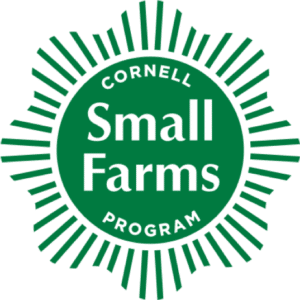If you have a disability and are having trouble accessing information on this website or need materials in an alternate format, please contact Cornell University via email at web-accessibility@cornell.edu for assistance.
The Cornell Small Farms Program is housed at Cornell University's College of Agriculture and Life Sciences (CALS) in Ithaca, NY, and works in partnership with Cornell Cooperative Extension across New York State.
Land Acknowledgement: Cornell University is located on the traditional homelands of the Gayogo̱hó:nǫɁ (the Cayuga Nation). The Gayogo̱hó:nǫɁ are members of the Haudenosaunee Confederacy, an alliance of six sovereign Nations with a historic and contemporary presence on this land. The Confederacy precedes the establishment of Cornell University, New York state, and the United States of America. We acknowledge the painful history of Gayogo̱hó:nǫɁ dispossession, and honor the ongoing connection of Gayogo̱hó:nǫɁ people, past and present, to these lands and waters.
© 2022 Cornell Small Farms. All Rights Reserved | Website by Maple Creative, buildwithmaple.com


